Abstract
Responses of cortical microtubules in spinach (Spinacia oleracea L. cv Bloomsdale) mesophyll cells to freezing, thawing, supercooling, and dehydration were assessed. Microtubules were visualized using a modified procedure for indirect immunofluorescence microscopy. Leaf sections of nonacclimated and cold-acclimated spinach were slowly frozen to various temperatures, fixed while frozen, and microtubules immunolabelled. Both nonacclimated and cold-acclimated cells exhibited nearly complete microtubule depolymerization after ice formation. After 1 hour thawing at 23°C, microtubules in both nonacclimated and cold-acclimated cells repolymerized. With time, however, microtubules in nonacclimated cells again depolymerized. Since microtubules in cells of leaf tissue frozen slowly are subjected to dehydration as well as subzero temperatures, these stresses were applied separately and their effects on microtubules noted. Supercooling induced microtubule depolymerization in both nonacclimated and cold-acclimated cells, but to a smaller extent than did freezing. Exposing leaf sections to solutions of sorbitol (a cell wall-penetrating osmoticum) or polyethylene glycol 10,000 (a nonpenetrating osmoticum) at room temperature caused microtubule depolymerization. The effects of low temperature and dehydration are roughly additive in producing the observed microtubule responses during freezing. Only small differences in microtubule stability were resolved between nonacclimated and cold-acclimated cells.
Full text
PDF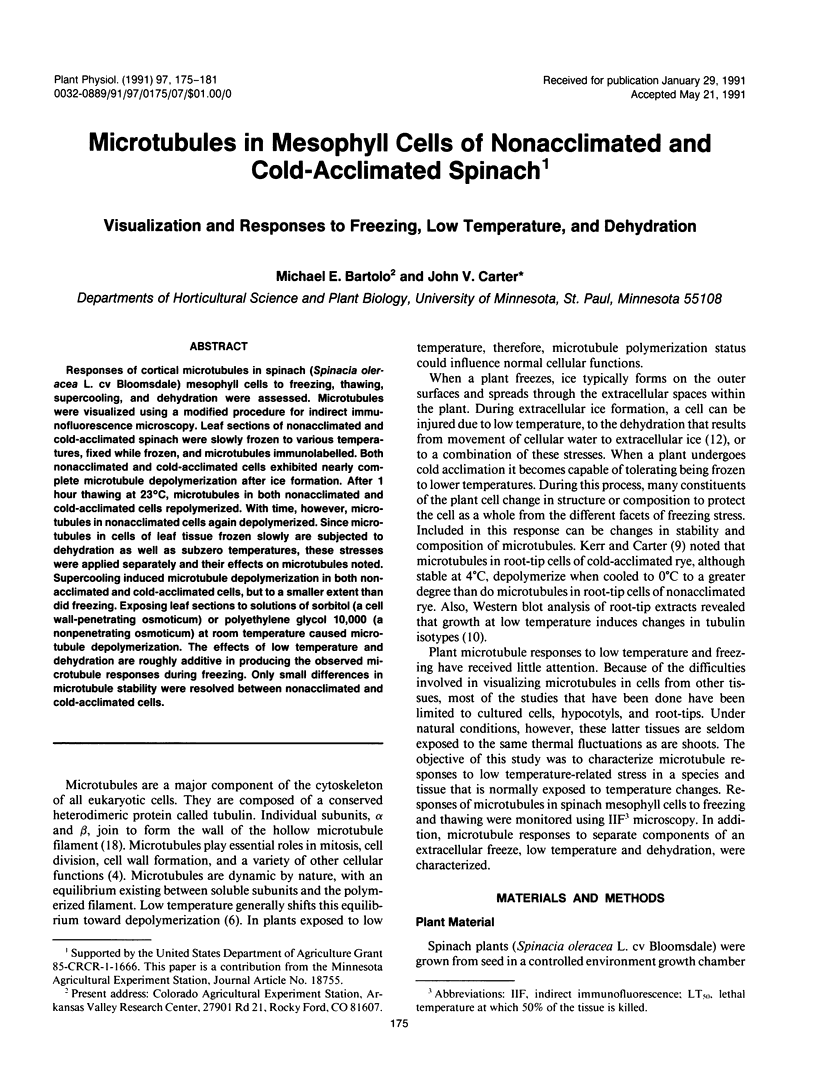
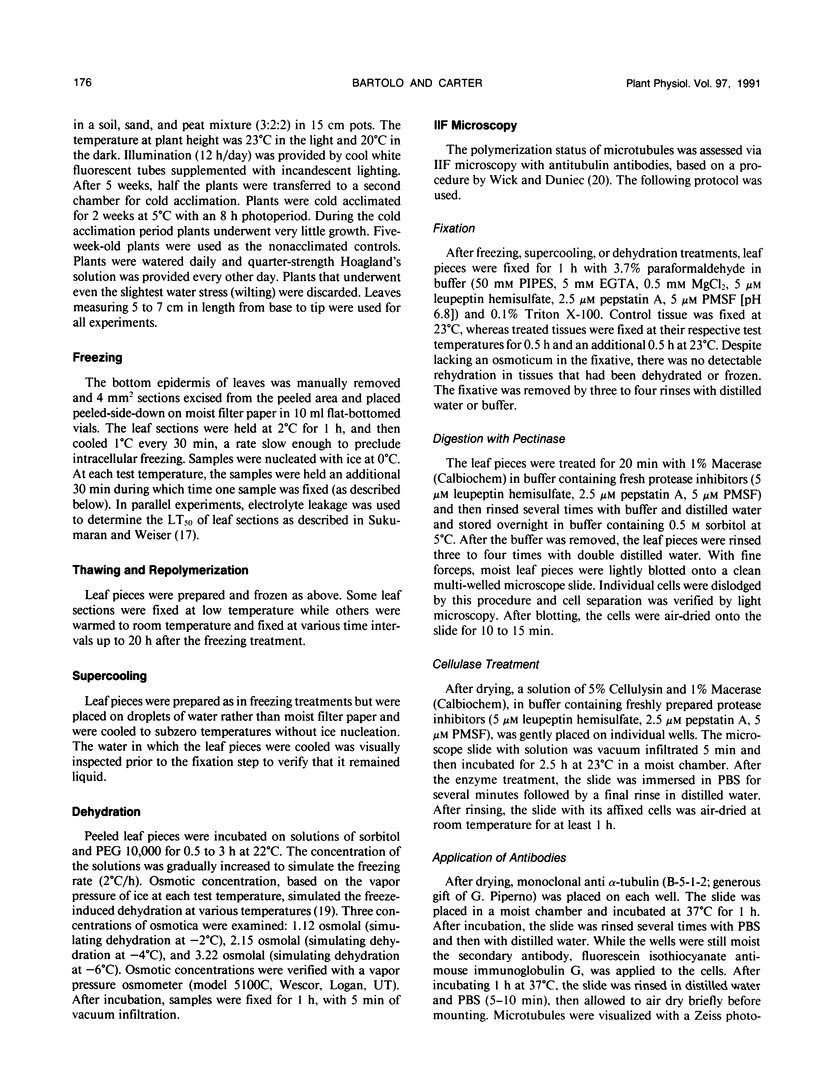
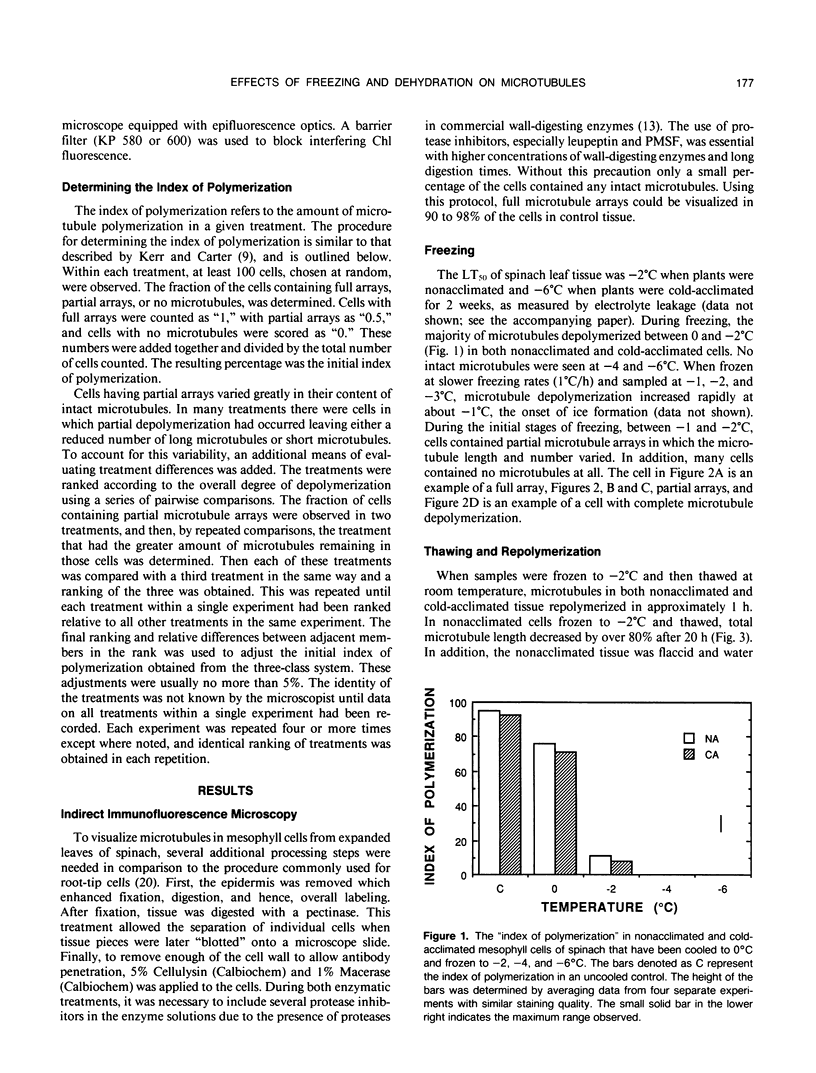
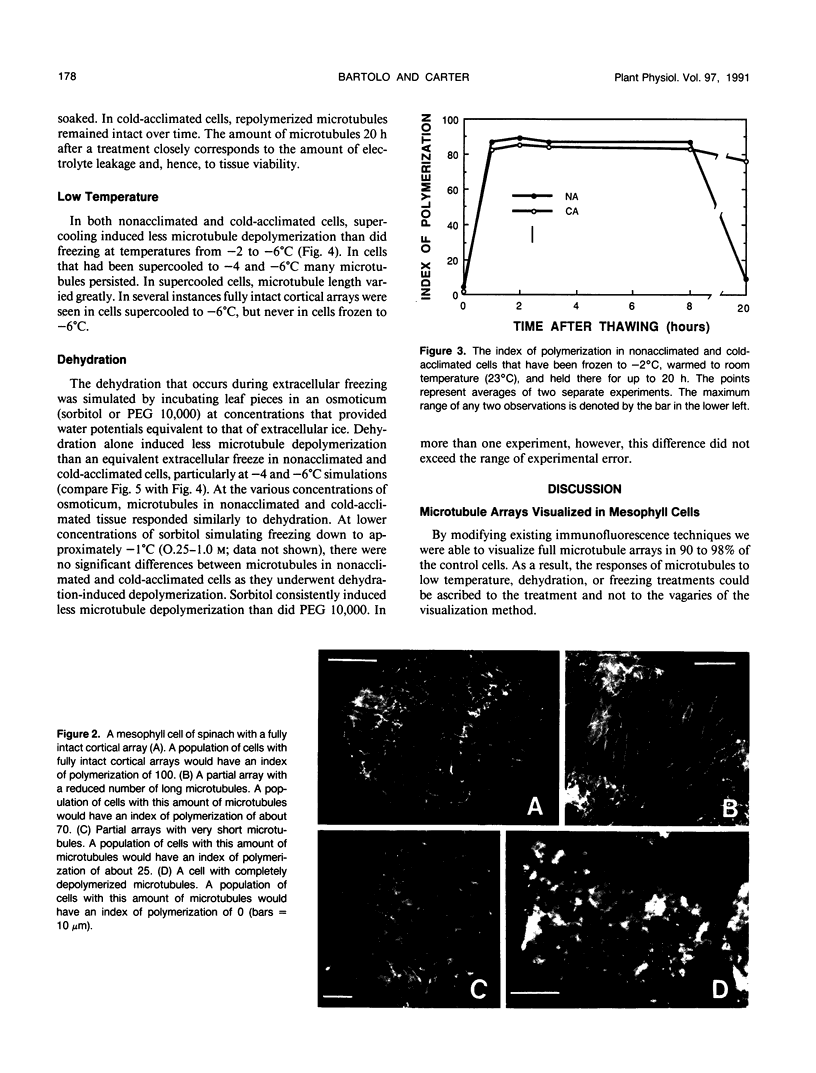
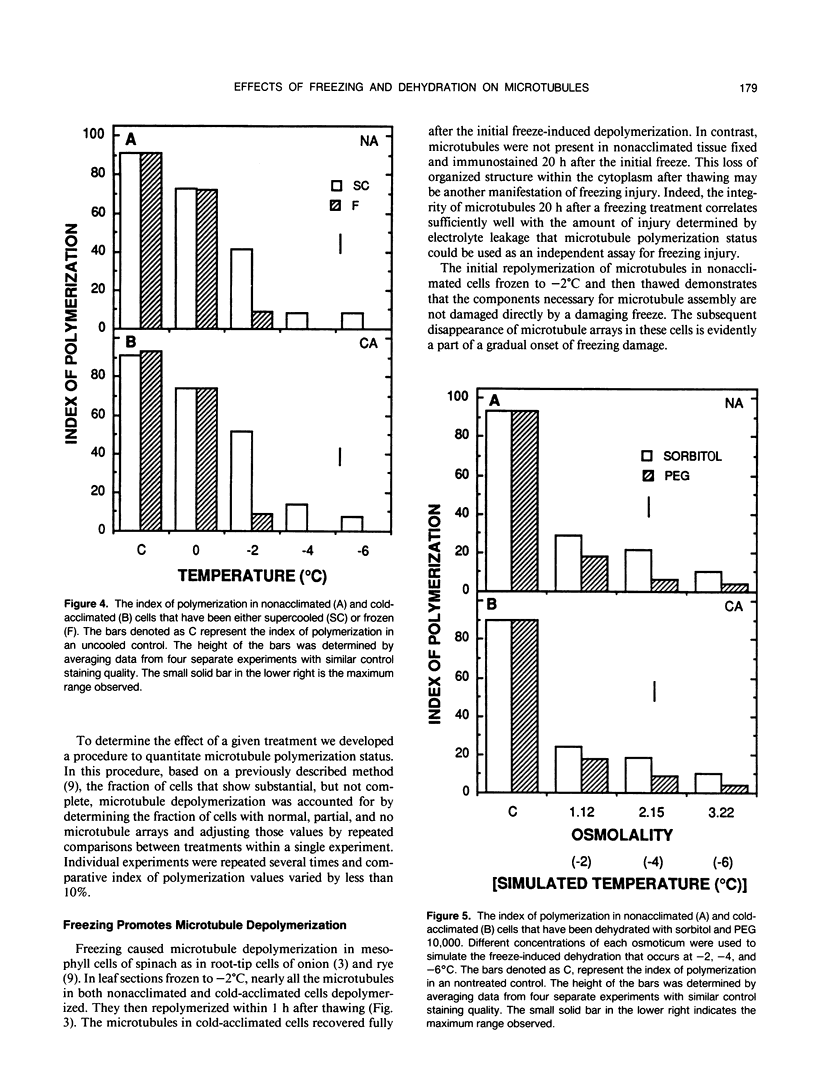
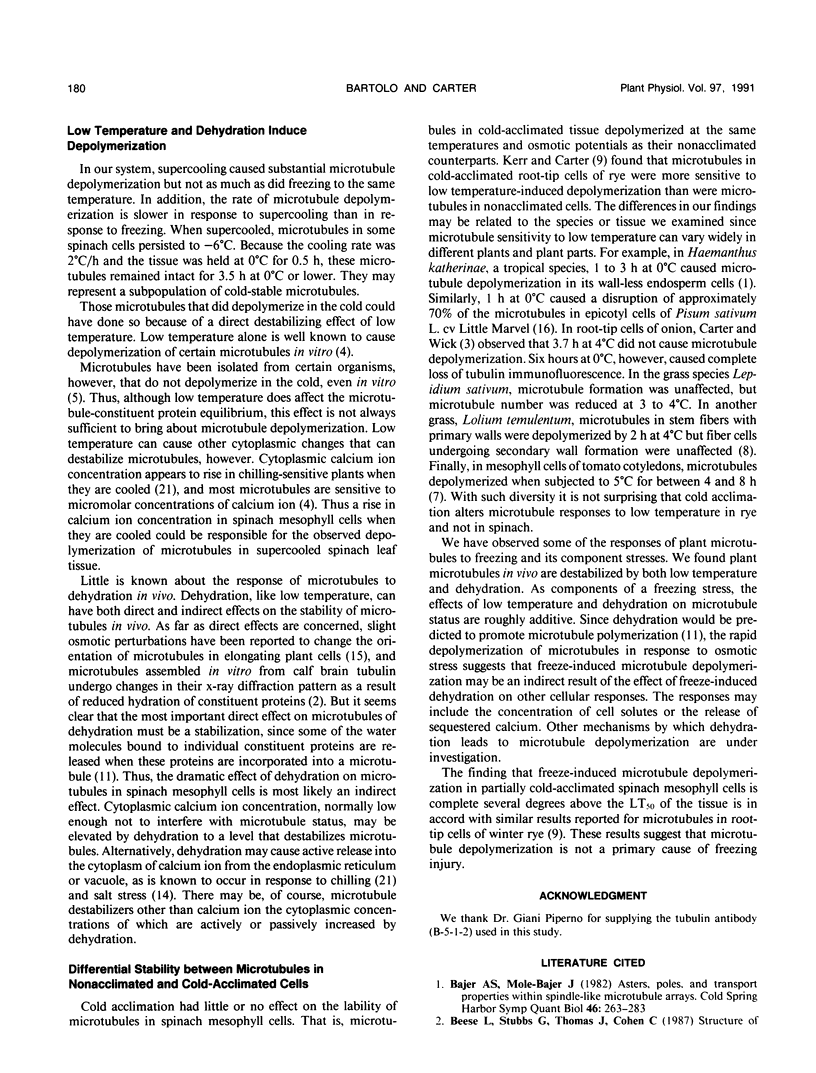
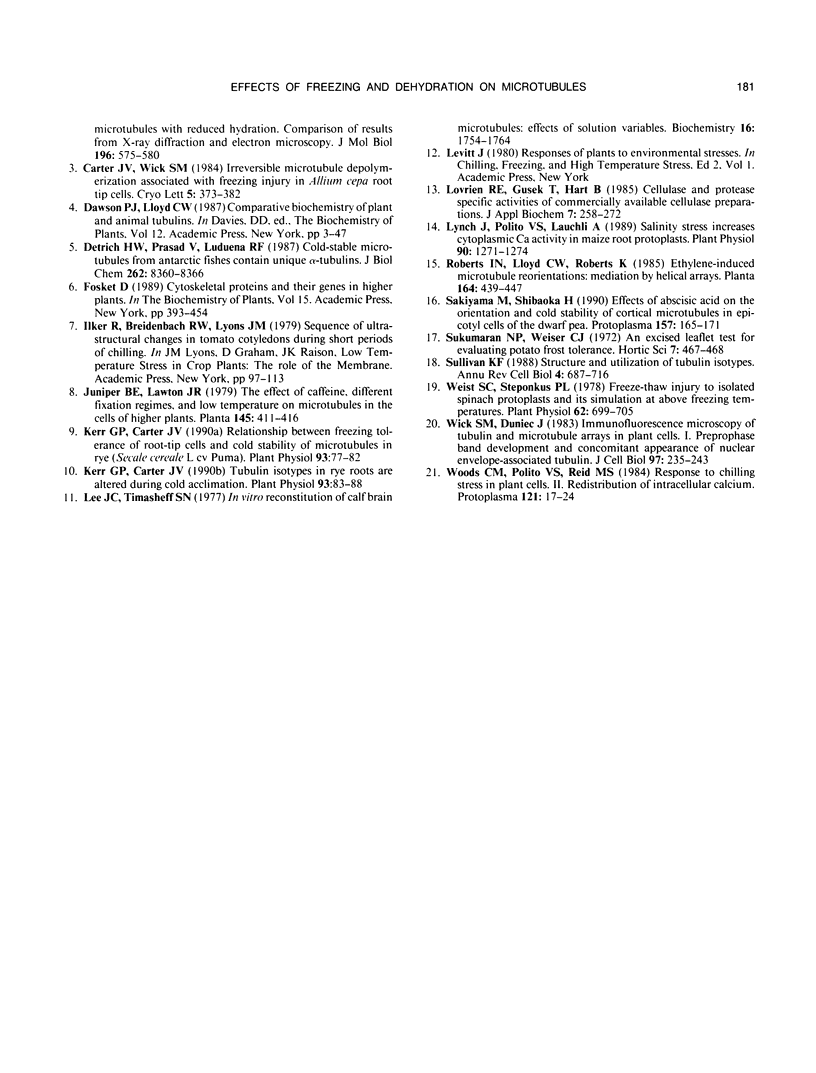
Images in this article
Selected References
These references are in PubMed. This may not be the complete list of references from this article.
- Bajer A. S., Molè-Bajer J. Asters, poles, and transport properties within spindlelike microtubule arrays. Cold Spring Harb Symp Quant Biol. 1982;46(Pt 1):263–283. doi: 10.1101/sqb.1982.046.01.029. [DOI] [PubMed] [Google Scholar]
- Detrich H. W., 3rd, Prasad V., Ludueña R. F. Cold-stable microtubules from Antarctic fishes contain unique alpha tubulins. J Biol Chem. 1987 Jun 15;262(17):8360–8366. [PubMed] [Google Scholar]
- Kerr G. P., Carter J. V. Relationship between Freezing Tolerance of Root-Tip Cells and Cold Stability of Microtubules in Rye (Secale cereale L. cv Puma). Plant Physiol. 1990 May;93(1):77–82. doi: 10.1104/pp.93.1.77. [DOI] [PMC free article] [PubMed] [Google Scholar]
- Kerr G. P., Carter J. V. Tubulin Isotypes in Rye Roots Are Altered during Cold Acclimation. Plant Physiol. 1990 May;93(1):83–88. doi: 10.1104/pp.93.1.83. [DOI] [PMC free article] [PubMed] [Google Scholar]
- Lee J. C., Timasheff S. N. In vitro reconstitution of calf brain microtubules: effects of solution variables. Biochemistry. 1977 Apr 19;16(8):1754–1764. doi: 10.1021/bi00627a037. [DOI] [PubMed] [Google Scholar]
- Lynch J., Polito V. S., Läuchli A. Salinity stress increases cytoplasmic ca activity in maize root protoplasts. Plant Physiol. 1989 Aug;90(4):1271–1274. doi: 10.1104/pp.90.4.1271. [DOI] [PMC free article] [PubMed] [Google Scholar]
- Sullivan K. F. Structure and utilization of tubulin isotypes. Annu Rev Cell Biol. 1988;4:687–716. doi: 10.1146/annurev.cb.04.110188.003351. [DOI] [PubMed] [Google Scholar]
- Wick S. M., Duniec J. Immunofluorescence microscopy of tubulin and microtubule arrays in plant cells. I. Preprophase band development and concomitant appearance of nuclear envelope-associated tubulin. J Cell Biol. 1983 Jul;97(1):235–243. doi: 10.1083/jcb.97.1.235. [DOI] [PMC free article] [PubMed] [Google Scholar]
- Wiest S. C., Steponkus P. L. Freeze-thaw injury to isolated spinach protoplasts and its simulation at above freezing temperatures. Plant Physiol. 1978 Nov;62(5):699–705. doi: 10.1104/pp.62.5.699. [DOI] [PMC free article] [PubMed] [Google Scholar]



